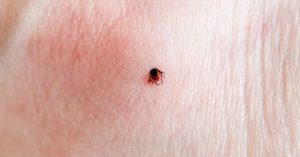
Patient: “Doctor, can you heal from Lyme disease—or is this something I’ll live with forever?”
Dr. Cameron: “You can heal. But the timeline and process depend on when you were diagnosed, the treatment you receive, and how your body recovers.”
This question is one of the most common I hear in my practice. The fear of lifelong illness is understandable, but the medical reality is much more hopeful.
Early Treatment Brings the Best Outcomes
When Lyme disease is recognized early, antibiotics can stop the infection before it spreads. Patients treated in this window often feel better within weeks of finishing their prescription. The bacteria are cleared, and recovery tends to be smooth.
The classic bull’s-eye rash is one early clue that makes prompt treatment possible.
Healing in Later Stages
If Lyme isn’t diagnosed until weeks or months later, the bacteria may spread to joints, the nervous system, or the heart. Even then, antibiotics can still eliminate the infection. Recovery, however, takes more time.
Joint swelling, nerve issues, or fatigue may linger during the healing process. Improvement still occurs, but it can unfold over months rather than weeks.
When Symptoms Linger After Treatment
Some patients continue to feel unwell even after antibiotics have done their job. Fatigue, brain fog, and joint pain may persist. This doesn’t necessarily mean the infection is still present—it often reflects the body’s gradual repair process.
Recovery after Lyme is not always linear. There can be ups and downs, but healing continues as the body rebalances and repairs.
Factors That Shape Recovery
Every patient’s path looks a little different. Several factors influence healing from Lyme disease:
-
Time to treatment: The earlier it starts, the quicker the recovery.
-
Overall health: Stronger baseline health often supports faster healing.
-
Age: Younger patients may bounce back more quickly.
-
Co-infections: Other infections carried by ticks, such as Babesia or Bartonella, may slow recovery unless properly treated.
-
Individual response: The immune system and repair processes vary from person to person.
Understanding Chronic Symptoms
For some patients, symptoms can persist for months or years. The causes can include:
- Incomplete treatment in complex cases
- Co-infections requiring different therapies
- Post-infectious syndrome, where the immune system takes time to reset
- Other medical conditions that mimic or worsen Lyme symptoms
This is why careful evaluation is essential. What feels like “chronic Lyme” may have more than one driver.
Supporting Your Healing
Antibiotics address the bacteria, but recovery also depends on supporting the body:
-
Rest and sleep to recharge the immune system
-
Nutritious foods to fuel repair
-
Stress management to reduce immune strain
-
Gradual return to activity to rebuild strength safely
These steps help the healing process unfold more smoothly.
The Reality of Recovery
Patient: “So can you heal from Lyme disease?”
Dr. Cameron: “Yes. Healing is possible. It may take weeks for some, months for others, but improvement does happen.”
Recovery is not always predictable. Some feel better quickly, others experience setbacks along the way. But variability does not equal treatment failure—it reflects the complexity of how different bodies heal.
The Bottom Line
Can you heal from Lyme disease? Yes. With early recognition and proper care, many patients recover quickly. Even with later diagnoses, improvement is still achievable—though it may take longer.
Lyme disease does not have to define your life. With patience, medical guidance, and supportive care, healing is not only possible—it is expected.
Links
- CDC: Lyme disease – Unique Case of Gastroparesis in a Chronic Lyme Disease Patient
- Dr. Cameron’t blog- The Case for Chronic Lyme: A Medical Perspective
- Dr. Cameron’s blog –Lyme disease: a persistent infection
- Dr. Cameron’s blog – Post-treatment Lyme may signal persistent infection



Thank you for providing such clear detailed information, are you able to provide any information that relates to post menopause and recurring Lyme symptoms? Thank you for your continued care to patients and the public